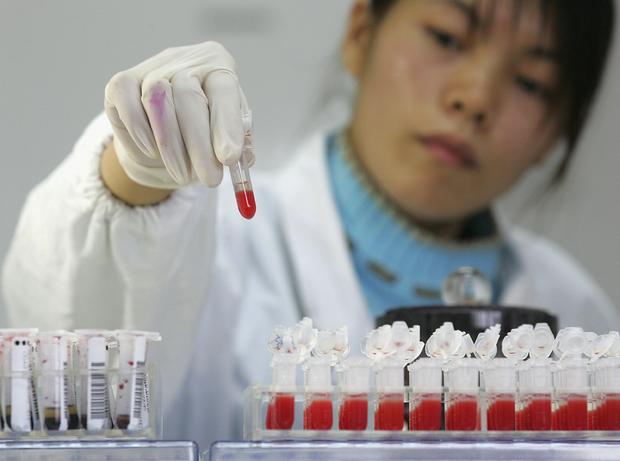STD Cases At Record High In US, CDC says
Follow CBSPHILLY Facebook | Twitter
ATLANTA (CBS/CNN) — Rates of syphilis, gonorrhea, and chlamydia have climbed for the fourth consecutive year in the United States, the Centers for Disease Control and Prevention announced Tuesday at the National STD Prevention Conference in Washington.
Last year, nearly 2.3 million US cases of these sexually transmitted diseases were diagnosed, according to preliminary data.
That's the highest number ever reported nationwide, breaking the record set in 2016 by more than 200,000 cases, according to the CDC.
"It is time that President Trump and [Health and Human Services] Secretary [Alex] Azar declare STDs in America a public health crisis," David Harvey, executive director of the National Coalition of STD Directors, which co-hosted the conference said Tuesday.
Man Battles $109,000 Hospital Bill, Gets Discount After Heart Attack
"What goes along with that is emergency access to public health funding to make a dent in these STD rates and to bring these rates down and to ensure that all Americans get access to the health care that they need," he said.
Rob Stephenson, a professor and director of the Center for Sexuality and Health Disparities at the University of Michigan in Ann Arbor, said that "it's not a surprising trend."
"I think over the last five years, we've seen a rapid increase in the prevalence of sexually transmitted infections in the US, and we're also starting to see a plateau in our fight against the HIV epidemic, as well," said Stephenson, who was not involved in the new CDC research.
In 2013, there were 1,752,285 total cases of chlamydia, gonorrhea and syphilis diagnosed in the United States. That number grew to 1,811,850 in 2014; 1,945,746 in 2015; 2,094,682 in 2016; and 2,294,821 in 2017, according to the preliminary CDC data.
Police Seek Public's Help Locating Missing Man With Dementia
"We're talking about millions of infections with just these three infections," said Dr. Edward Hook, endowed professor of infectious disease translational research at the University of Alabama at Birmingham's School of Medicine and scientific committee chair of the National STD Prevention Conference.
It's concerning to see such tremendous and significant increases in STD rates across the country, Hook said.
The preliminary data suggest that more than 1.7 million cases of chlamydia were diagnosed in 2017, with about 45% -- 771,340 cases -- emerging among 15- to 24-year-old women and girls.
Chlamydia, which remained the most common STD reported to the CDC, is caused by the bacterium Chlamydia trachomatis and easily transmitted during any form of sexual activity. If not treated, chlamydia can lead to pelvic inflammatory disease in women, which can cause permanent damage to the reproductive system. In men, the infection can spread to the tube that carries sperm from the testicles, causing pain and fever.
Meanwhile, syphilis diagnoses jumped from 27,814 cases in 2016 to 30,644 in 2017, according to the preliminary data. Men who engage in sexual activity with men made up 17,736 of those syphilis cases in 2017, the data suggest.
Syphilis, caused by the bacterium Treponema pallidum, can affect the heart, nervous system and other organs if left untreated. Syphilis is most often transmitted through sexual contact, although it also can be transmitted in other ways, such as from mother to baby, which is called congenital syphilis.
"We know today that some of what is driving congenital syphilis are women who are trading sex for drugs and that that explains some of the infections we are seeing in babies of syphilis," Harvey said Tuesday.
Gonorrhea diagnoses increased from 468,514 in 2016 to 555,608 cases in 2017, according to the data. Among men only, cases climbed from 270,033 in 2016 to 322,169 in 2017, the data suggest.
If not treated, gonorrhea can cause severe and permanent health issues, including problems with the prostate and testicles in men or problems with pregnancy and infertility in women. Gonorrhea is typically treated with a dual therapy of the antibiotics ceftriaxone and azithromycin. Yet the threat of antibiotic-resistant gonorrhea persists nationwide.
"Over the years, gonorrhea has become resistant to nearly every class of antibiotic we've used to treat it, except for ceftriaxone. The only remaining highly effective antibiotic to treat gonorrhea in the United States now," Dr. Gail Bolan, director of the CDC's Division of STD Prevention, said Tuesday.
Survey: 3.5 Million Would Opt For Jail To Erase Debt
In other words, though there have been a few documented cases, widespread resistance to ceftriaxone has not been seen.
"That approach seems to be working," she said. "Emerging resistance to ceftriazone has not been seen since the dual therapy approach was implemented, and there has not yet been a confirmed treatment failure in the United States when using the recommended therapy."
If gonorrhea becomes resistant to all such combinations of antibiotic therapies, it could become an untreatable STD.
CDC's preliminary data show that emerging resistance to azithromycin is on the rise in laboratory testing. In 2013, 1% of gonorrhea samples showed emerging resistance to the drug, but that number had risen to more than 4% in 2017, according to the CDC.
All in all, "we are sliding backward," Dr. Jonathan Mermin, director of the CDC's National Center for HIV/AIDS, Viral Hepatitis, STD, and TB Prevention, said in a news release about the new numbers of reported cases.
"It is evident the systems that identify, treat, and ultimately prevent STDs are strained to near-breaking point," he said.
The National STD Prevention Conference, where the preliminary data were presented, continues until Thursday. During the program, health care professionals, scientists and other experts will discuss the STD epidemic and possible solutions.
Get Paid To Be A Professional Vacationist For 'World's Best Job'
In recent years, state and local STD programs have seen budget cuts, too. In 2012, 52% of such programs experienced budget cuts, amounting to reductions in clinic hours, contact tracing and screening for common STDs, according to the CDC.
Additionally, the direct medical costs of treating STDs in the US are not cheap.
The 19.7 million cases of sexually transmitted infections that occurred in 2008 in the US equaled about $15.6 billion in total lifetime direct medical costs, according to a study published in the journal Sexually Transmitted Diseases in 2013.
"I do think we've seen significant funding cuts in prevention efforts around sexual health in general," Stephenson said. "It's not a difficult jump to see how that's actually preventing us from winning the fight against negative sexual health outcomes."
Officials explain that if left untreated these diseases can lead to infertility, ectopic pregnancy, still-birth, and increased hiv risk.
The-CNN-Wire ™ & © 2018 Cable News Network, Inc., a Time Warner Company. All rights reserved.




